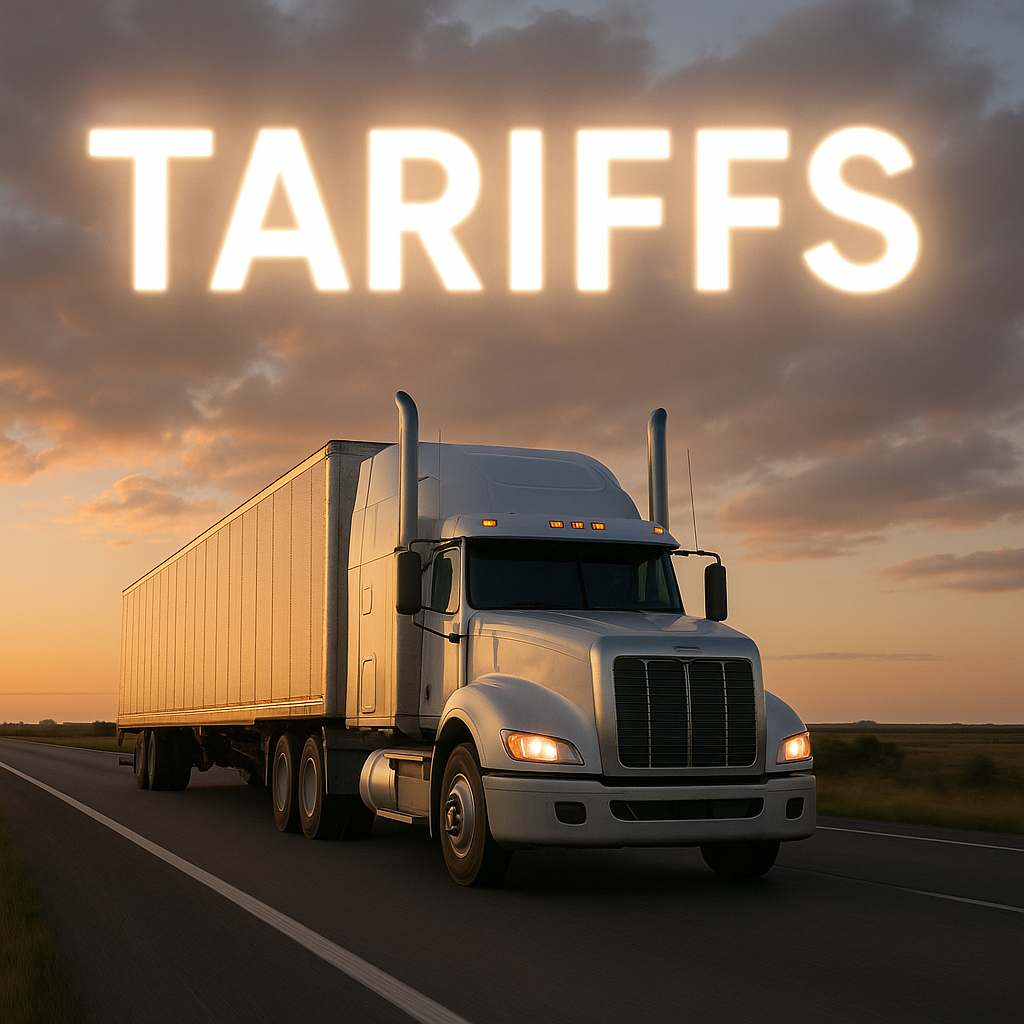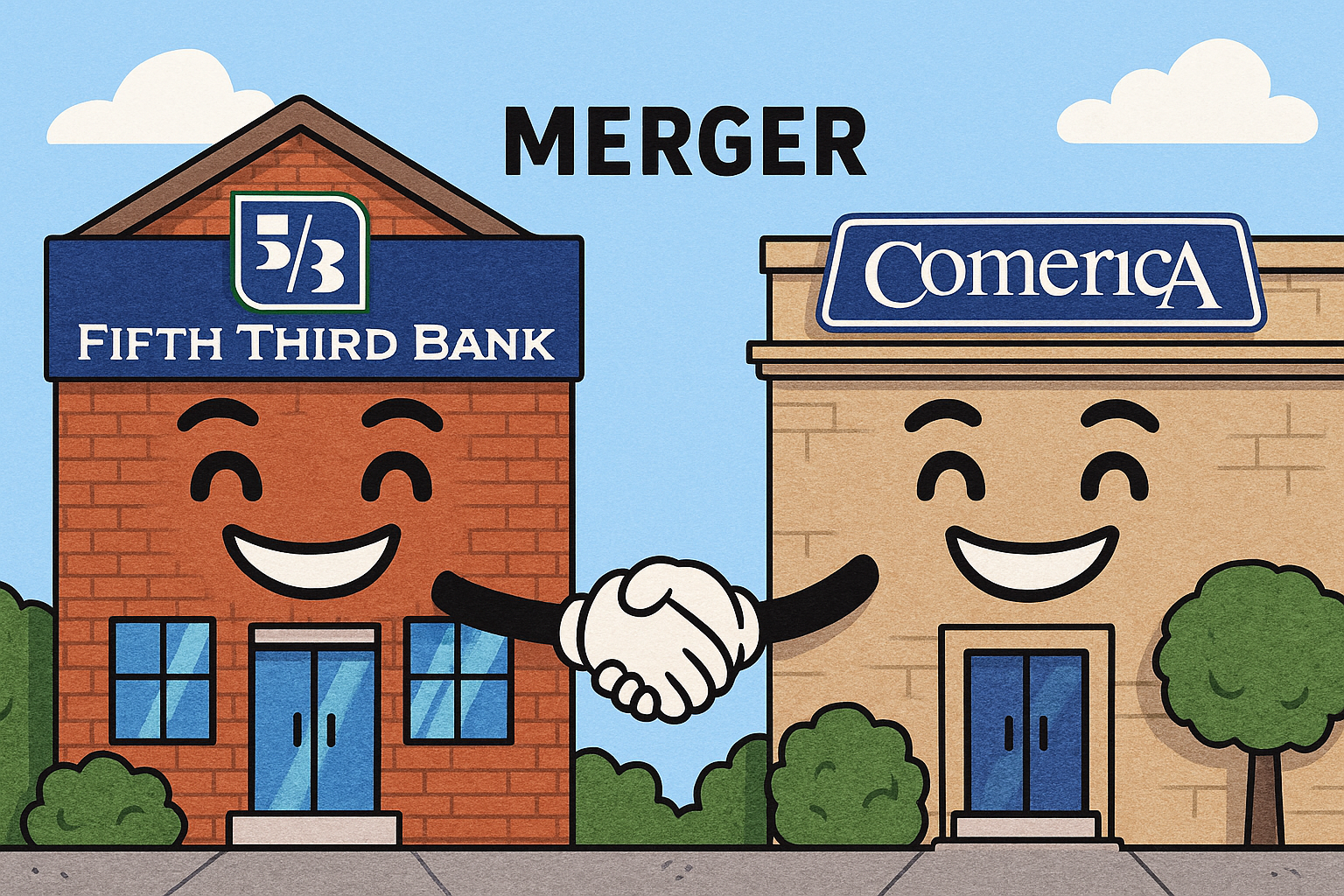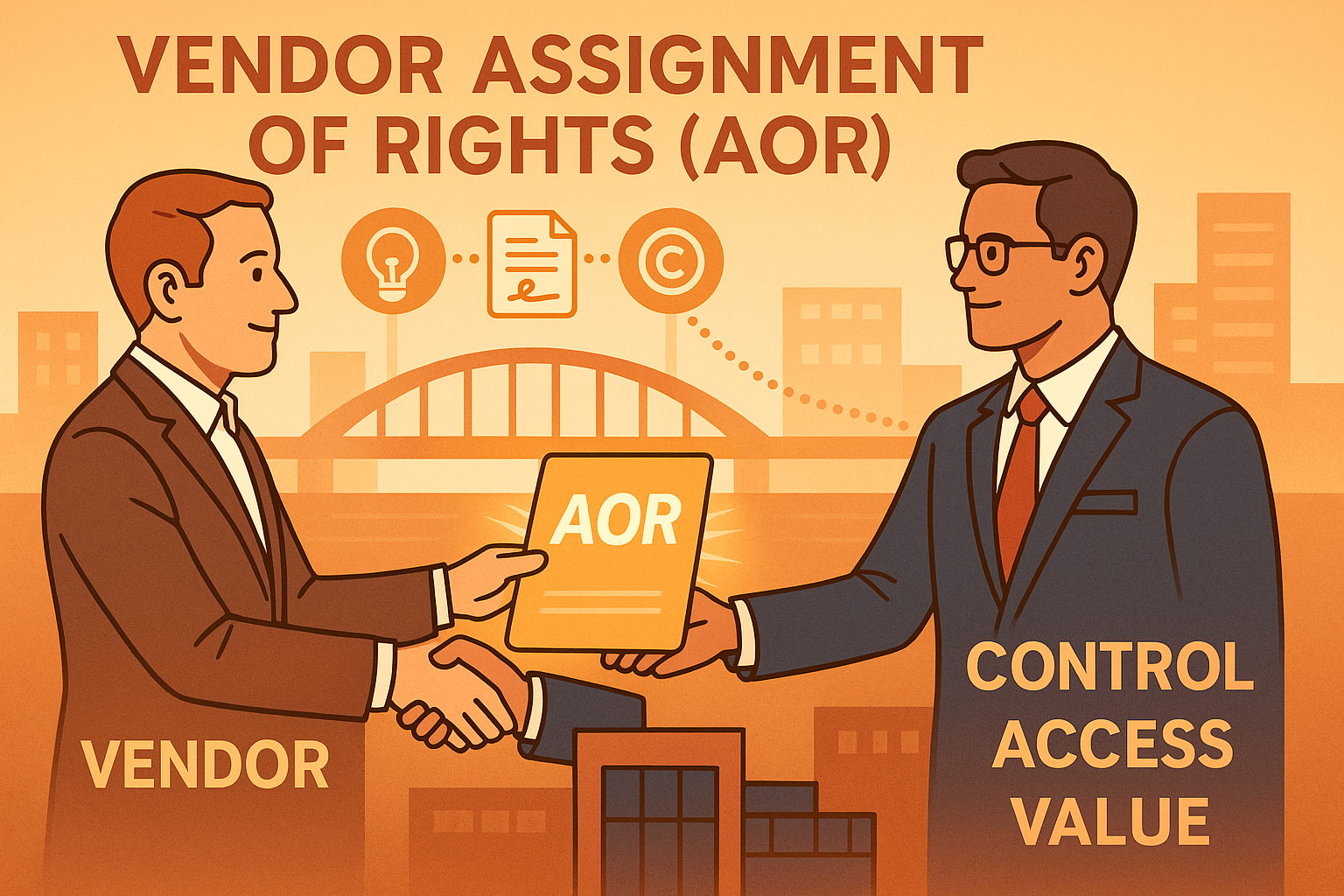Our Resources

At Transportation Tax Consulting LLC (TTC) , accuracy isn’t optional — it’s foundational. In the fast-paced world of tax and compliance consulting, even the most diligent organizations understand that mistakes can happen. What defines a firm’s integrity isn’t perfection, but how it responds when challenges arise. TTC’s reputation is built not only on technical expertise but on trust — the kind of trust that comes from being transparent, taking accountability, and doing what’s right every time. These three principles aren’t just values; they are the operational framework that drives our work and distinguishes us within the transportation industry. Transparency: Communicating Clearly and Quickly When challenges or errors occur, TTC believes that the most ethical and professional response is transparency. We communicate promptly with clients to identify what happened, explain the impact, and outline the immediate steps being taken to resolve the issue. This open and direct approach builds long-term confidence and demonstrates respect for the businesses we serve. Transparency also defines our internal culture. Every team member is encouraged to speak up when something doesn’t look right — without hesitation or fear of reprisal. This proactive mindset ensures that potential issues are caught early, addressed swiftly, and used as opportunities for improvement. In an industry where timing, compliance, and precision are essential, clarity and honesty are our cornerstones. Accountability: Owning Every Process and Outcome At TTC, accountability is not delegated — it’s embraced. We take ownership of our work from start to finish, and when an error is identified, our response begins with responsibility, not excuses. Each incident is carefully reviewed to identify process gaps and implement corrective measures that strengthen our systems and our people. Our leadership model emphasizes shared accountability. Rather than focusing on who made a mistake, we ask why it occurred — Was there a process gap? Was a tool misused? Was additional training needed? This approach fosters continuous improvement and reinforces that the responsibility to make it right always rests with us, not the client. Accountability at TTC means standing behind our work, making corrections thoroughly, and ensuring every resolution reinforces the quality and reliability our clients expect. Integrity: Doing the Right Thing, Every Time Integrity is the foundation of our firm’s professional character. It guides every decision, communication, and correction. When mistakes happen, integrity ensures we respond with honesty and urgency; when clients need reassurance, integrity ensures that our actions align with our words. We never take shortcuts or hide behind complexity. Instead, we uphold ethical standards that reflect our responsibility to the clients and communities we serve. Integrity means doing what’s right — even when it’s difficult — and turning every challenge into an opportunity to strengthen trust and reinforce our commitment to excellence. Excellence Through Ethical Practice Transparency, accountability, and integrity are not aspirational values at Transportation Tax Consulting LLC — they are the way we operate every day. From client communication to internal review processes, these principles define our culture and drive the quality of our work. In a profession where accuracy, compliance, and trust are paramount, TTC’s difference lies in how we handle challenges: openly, responsibly, and with unwavering integrity. Mistakes may be inevitable, but integrity is always a choice — and at TTC, we choose to be transparent, accountable, and committed to getting it right.

Beginning Nov. 1, 2025 , the U.S. will impose a 25% tariff on imported medium- and heavy-duty trucks (Classes 3 through 8), according to a recent announcement by the Trump administration. While this move is intended to protect domestic manufacturers, it carries broad implications for transportation companies, fleets, lessors, brokers, and the broader supply chain. This article breaks down what’s changing, who is most exposed, and how transportation businesses can prepare. What the Tariff Covers — and What It Doesn’t (Yet) Scope The announced tariff applies to imported medium- and heavy-duty trucks (Classes 3–8). The tariff was originally scheduled to take effect on Oct. 1 but was delayed to Nov. 1 . Crucially, it remains unclear whether USMCA-compliant imports (i.e. trucks built in Mexico or Canada meeting local content thresholds) will be exempt. Also unresolved is the treatment of truck parts and components . Some commentators expect parts could be included or indirectly impacted via associated metal or materials tariffs. Interaction With Other Tariffs Truck manufacturing already depends heavily on steel, aluminum, and other tariff-sensitive materials. Many parts are made of or incorporate materials under existing tariffs. Some industry observers caution that “stacking” of tariffs (i.e. applying multiple tariffs to a single item) may push costs even higher. Because of cross-border supply chains, components may pass through multiple countries before final assembly — complicating cost pass-through analysis. Why It Matters to Transportation Companies 1. Higher Acquisition Cost for Trucks If you purchase imported trucks or rely on import channels, expect tariff-driven price inflation . Some estimates suggest that a 25% import tariff combined with a 12% federal excise tax (FET) could raise the cost of a Class 8 tractor significantly — from around $170,000 to as much as $200,000+ or even $224,000 in some scenarios. That level of cost escalation could delay or reduce new-vehicle purchases , force longer holding of older equipment, or shift demand to domestic OEMs. 2. Shifts in OEM Competitive Landscape Companies with strong U.S. manufacturing footprints (e.g., Freightliner, Peterbilt, Kenworth, Mack) could benefit from reduced import competition. However, parts and components cost pressures still apply even to U.S.-built units, and supply chain disruptions may ripple into pricing and lead times. 3. Impact on Fleet Renewal Cycles & Used Truck Market With new trucks getting more expensive, many fleets may extend equipment cycles or turn toward the used truck market . That could increase competition and demand (and pricing) in the used segment. 4. Operating Cost Pressures Even if your fleet does not directly import trucks, cost inflation may arise through: Replacement parts (if imported or made with tariff-impacted inputs) Delays or shortages in parts, increasing downtime Upstream supplier renegotiations or passing through additional material costs Fleets may need to increase parts inventory buffers or reconsider sourcing strategies. 5. Rate Pressure and Revenue Pass-Through Dilemmas Transportation companies operate in a highly competitive, low-margin environment. Many carriers will find it difficult to pass on increased capital or operating costs fully to shippers. Some may attempt fuel or equipment surcharges or renegotiate contracts, but success will vary depending on segments (e.g. contract vs spot). 6. Strategic & Logistical Impacts Carriers may rush orders before Nov. 1 to avoid tariffs, accelerating shipments and putting strain on production capacity in the short run. Supply chain bottlenecks (ports, customs, inland transport) may get worse as shippers pull forward demand. Firms might reexamine cross-border sourcing, localization strategies, or vehicle sourcing from exempt jurisdictions. Who Is Most Exposed Smaller fleets & independents that lack negotiating leverage or diversified sourcing channels Import-reliant fleets that historically imported trucks or relied on cross-border purchases Leasing firms and used-truck wholesalers exposed to acquisition price volatility Brokers and 3PLs that manage fleets or equipment leasing Maintenance-heavy operations (e.g. regional/dedicated fleets) reliant on imported parts Key Questions Every Transportation Executive Should Ask Are any of your fleets or upcoming purchases slated to be imported trucks or sourced via foreign manufacturers? If yes, quantify exposure (number of units, expected price delta). Do your trucks/components meet USMCA/local content thresholds? If exemptions apply, ensure compliance documentation is robust. Can you accelerate orders to beat the Nov. 1 cutoff? But be cautious not to over-order and risk excess inventory. Can you negotiate with OEMs or brokers to share tariff burdens? Consider cost-sharing, incremental payments, or delayed delivery windows. Should you increase parts inventories or diversify suppliers? Identify critical components vulnerable to tariffs or supply chain disruption. Can you pass through costs via surcharges or rate adjustments? Evaluate contract flexibility and customer tolerance in your markets. Is it time to reassess fleet renewal timing? Analyze ROI under new tariffs — perhaps hold older equipment a little longer. Are there legal or regulatory challenges under consideration? Some trade groups may contest the tariff’s legality (especially vis-à-vis USMCA). Tactical Moves to Mitigate Tariff Impact Below are steps transportation companies can take now to adapt: A. Portfolio & Purchase Strategy Frontload orders where possible (without creating capacity or cash flow issues) Shift to domestic OEMs (if price and performance align) Revisit trade agreements — be sure you maintain documentation proving USMCA compliance if claiming exemption Lease rather than buy — may reduce exposure if leases cover depreciation rather than full capital cost B. Supply Chain Strategy Audit parts and material sourcing to identify high-risk imported components Broaden supplier base to include more domestic sources or near-shoring Stock-up selectively on long-lead or critical parts before tariffs bite Negotiate flexibility with suppliers to share cost burdens C. Financial Planning & Cost Control Model “tariff-on” cost scenarios to stress-test budgets Raise capital lines or liquidity now in case of cash flow pinch Use hedging or price escalators in procurement contracts Tighten maintenance scheduling to reduce wear, defer noncritical work D. Pricing & Contract Management Introduce or revise equipment surcharges for new or renewal contracts Incorporate tariff-adjustment clauses in customer contracts where feasible Segment customers by cost sensitivity and ability to absorb increases Negotiate shared increments in long-term agreements E. Communication & Stakeholder Engagement Inform customers/shippers early about expected cost impacts Collaborate with industry groups (e.g. ATA) to influence policy or seek clarifications Monitor litigation or rulemaking that may affect tariff enforcement Potential Risks & Unknowns USMCA exemptions : The administration may allow exemptions for qualifying trucks built in Mexico/Canada. Whether those exceptions hold or are overridden is uncertain. Part-level exemptions or carve-outs : Some parts or components may be exempt or treated differently, especially if classified under separate HTS codes. Duration of tariff regime : It’s not yet clear how long these tariffs will remain in force — months? years? Legal challenges : Trade groups or trading partners may challenge the tariff’s compliance with trade treaties or domestic law. Macroeconomic feedback : Higher costs could reduce demand for freight, further pressuring rates and utilization. Conclusion The Nov. 1, 2025 tariff on imported medium- and heavy-duty trucks marks a significant shift in U.S. industrial and trade policy, with potentially profound implications for the transportation sector. While designed to protect domestic manufacturers, these tariffs will ripple across the supply chain, affecting acquisition costs, parts pricing, fleet renewal strategies, and competitive dynamics. For transportation companies, the window is now to stress-test assumptions, renegotiate supply contracts, accelerate or delay orders strategically, and clearly communicate with customers . Those who plan proactively may be able to soften the blow — while those who wait until the tariff hits could find their margins squeezed severely.

When Fifth Third Bancorp announced its $10.9 billion all-stock acquisition of Comerica Inc. in early October 2025, headlines naturally focused on the banking sector. The combined company will become the ninth-largest U.S. bank by assets — roughly $288 billion — extending Fifth Third’s Midwest roots deep into Texas, California, and the Southeast. But for the trucking industry , the merger’s impact may be just as significant. As one of the nation’s most capital-intensive and credit-dependent sectors, trucking depends heavily on banks for fleet financing, equipment leasing, working capital, and treasury services. A merger of this size reshapes that landscape in ways that could both help and challenge carriers of every size. 1. The deal in brief Under the terms announced October 6, 2025, Comerica shareholders will receive approximately 1.8663 shares of Fifth Third stock per Comerica share. Fifth Third shareholders will own about 73 percent of the combined company; Comerica shareholders about 27 percent. The deal is expected to close by Q1 2026 , pending regulatory approval. Executives from both banks described the transaction as a natural extension of complementary strengths: Fifth Third’s strong Midwest and Southeast presence with Comerica’s footprint in Texas and the West Coast . The combined bank gains scale in commercial lending, payments, and wealth management — areas central to corporate and middle-market clients, including trucking and logistics. Both institutions already serve transportation companies. Fifth Third operates a Transportation vertical inside its Corporate & Investment Banking division, while Comerica has long-standing relationships with trucking, manufacturing, and dealer-finance clients. 2. The trucking industry’s banking reality Trucking is capital-intensive, fragmented, and cyclical. Even large carriers operate on thin margins, and smaller fleets depend on local or regional banks for credit lines, factoring, and equipment loans. At any given time, trucking companies need access to several financial tools: Fleet financing for tractors, trailers, and technology upgrades Lines of credit to smooth volatile cash flow Fuel and maintenance cards or treasury services to manage expenses Leasing programs to spread risk and manage fleet age Payments and receivables platforms for quick turnaround of customer invoices The Fifth Third–Comerica merger could shift these dynamics by changing who provides capital, where decisions are made, and how credit risk is evaluated. 3. Greater credit capacity — but more centralization On paper, the combined bank’s larger capital base could be a net positive for trucking. A stronger balance sheet allows the institution to take on bigger loans, reduce concentration limits, and expand industry verticals such as transportation. That could translate into: Higher lending limits for large and mid-sized carriers that previously exceeded Comerica’s thresholds. Improved cost of funds , as a larger bank can borrow and lend more cheaply, potentially lowering loan interest rates or leasing costs. Integrated service packages combining loans, treasury, and payments — especially appealing to large regional carriers. However, bigger banks often bring centralized credit decisions and more rigid underwriting. What once might have been a relationship-based loan from a Comerica regional manager could now require approval through Fifth Third’s national credit committee. Owner-operators and small carriers may lose the personal relationships that previously enabled flexible terms or quick funding decisions. In the short term, as integration progresses, credit pipelines could even slow — mergers often lead to temporary “pause periods” in loan approvals as systems, risk models, and teams are unified. 4. Implications for fleet financing and leasing Comerica and Fifth Third both maintain equipment-finance divisions that support trucking fleets. Their merger creates one of the larger U.S. regional bank leasing portfolios. Potential benefits: More competitive leasing rates as the combined entity can fund longer-term or larger-volume transactions. Broader geographic reach , giving carriers in Texas, the Southeast, and the Midwest access to similar products and terms. Cross-selling opportunities — for example, linking lease structures with fuel or payments accounts for operational efficiency. Potential drawbacks: Stricter asset-residual policies. Fifth Third may impose uniform rules that raise down payments or limit balloon-payment structures. Reduced flexibility for smaller fleets seeking nonstandard lease terms. Risk re-rating if the merged bank decides to treat trucking as a “high-volatility commercial sector.” Fleet operators should watch closely for early communications from Fifth Third’s transportation-finance team. Locking in current rates or extending existing lines before the merger closes could prove prudent. 5. Working capital and cash-flow management Trucking’s profitability depends on managing cash-flow timing — expenses like fuel, driver pay, insurance, and maintenance occur daily, while shippers often pay 30–60 days after delivery. Both Fifth Third and Comerica offer factoring, invoice financing, and supply-chain payment tools. The combined entity will likely try to scale these, possibly offering: Faster invoice funding through integrated digital platforms Unified cash-management portals with real-time visibility of accounts and payments Expanded fuel-card and treasury-management programs tailored to transport For large carriers with sophisticated treasury departments, this could be a win: a one-stop bank with national coverage and strong digital tools. For smaller fleets, however, consolidation could reduce competition and bargaining power. Regional or community banks that once priced aggressively to win transport business may struggle to compete, pushing carriers toward larger institutions that may charge higher fees. 6. Effects on interest rates and cost of capital The merger itself does not directly change national interest rates, but larger institutions face higher regulatory capital requirements . If Fifth Third must hold more Tier 1 capital post-merger, it may price loans slightly higher to maintain returns. For trucking companies, even a 25- to 50-basis-point rate increase can meaningfully impact operating margins, especially on fleet loans exceeding several million dollars. That said, a stronger, better-capitalized bank could offer more stable financing through economic downturns — an advantage when freight cycles soften and smaller banks retreat from riskier lending. 7. Geographic shifts and regional access Geography matters in trucking finance. Comerica’s strength in Texas and California complements Fifth Third’s Midwest and Southeast dominance. The merged bank will have branches and corporate offices in nearly every major freight corridor — from Chicago to Dallas to Atlanta and Los Angeles. This could mean: Improved access for carriers headquartered in Sunbelt and Southeast states, where Fifth Third gains new presence. Potential branch closures in overlapping Midwest markets, which might reduce local access for smaller carriers. Centralized decision-making in Cincinnati or Dallas, potentially slowing loan approval for independent operators accustomed to local bankers. Carriers should monitor which offices remain designated for transportation lending and whether local relationships will continue post-integration. 8. Technology and payments modernization A major motivation behind the deal is to scale digital payments and commercial treasury services . Fifth Third has invested heavily in fintech integration, real-time payments, and automated receivables platforms. Comerica’s small-business and commercial clients could benefit from these upgrades. For trucking companies, this modernization could: Enable instant driver reimbursements or fuel-card settlements Simplify freight-broker payments through faster ACH and RTP networks Improve visibility into daily cash balances for fleet managers The challenge will be integration speed. During the merger transition, systems migrations sometimes cause delays or compatibility issues — something that can disrupt payment cycles for fleets relying on precise timing. 9. Competitive banking landscape for trucking The Fifth Third–Comerica deal is part of a broader consolidation trend among U.S. regionals. As mid-tier banks combine, the number of relationship-oriented lenders serving transportation shrinks. Consequences for trucking: Less competition in mid-market fleet lending could push borrowing costs up. Increased emphasis on large clients — the merged bank may favor carriers with $50 million+ annual revenue over small operators. Greater need for specialized lenders — trucking companies may turn to nonbank financiers, private credit funds, or OEM-linked finance arms for flexibility. At the same time, a more robust regional bank could rival Wall Street lenders in offering integrated solutions — credit, treasury, payments, and advisory — under one roof. 10. Risk management, ESG, and compliance pressures As the merged bank moves into the top-ten U.S. banks, it will face stricter regulatory oversight and greater public scrutiny, including ESG (environmental, social, and governance) expectations. That could flow down to trucking clients through: ESG-linked lending criteria , where interest margins depend on emissions reductions or fleet efficiency metrics. Enhanced compliance documentation for credit renewals and equipment loans. Pressure to modernize fleets , favoring electric or low-emission vehicles to align with the bank’s sustainability policies. Forward-thinking carriers could benefit by positioning themselves as “green fleet” partners eligible for sustainability-linked financing programs. 11. Short-term turbulence, long-term potential Bank mergers often bring short-term disruption — system conversions, staffing changes, repricing of portfolios, and delays in approvals. Trucking firms should expect some administrative turbulence through late 2025 and early 2026. However, the long-term outlook may be positive: a financially stronger, geographically broader, technology-driven bank could become a reliable partner for the trucking industry’s next growth phase — particularly as freight volumes rebound and fleet electrification accelerates. 12. Practical steps for carriers and logistics operators To prepare for the coming changes, trucking leaders should act now: Review current credit lines and leases. Confirm renewal dates and consider extending them before merger-related repricing. Diversify banking relationships. Maintain at least one backup relationship with another regional or national bank to preserve bargaining leverage. Engage relationship managers early. Ask how your accounts will transition and which teams will handle transportation finance post-merger. Lock in fixed-rate loans while rates remain stable and before potential spreads widen after integration. Leverage technology improvements. Prepare to adopt Fifth Third’s advanced payments platforms once integration completes — faster settlements can improve cash flow. Highlight sustainability initiatives. Demonstrate how fleet modernization aligns with the bank’s ESG lending preferences to improve financing terms. Monitor local footprint changes. Stay alert to branch consolidations or decision-center moves that could affect access to credit officers. 13. Outlook: Fewer banks, bigger consequences Trucking operates on narrow margins and heavy debt. As the number of independent regional banks declines, access to relationship-driven lending — once a hallmark of the industry — becomes rarer. The Fifth Third–Comerica merger exemplifies this consolidation wave. Whether it ultimately helps or hinders the trucking community will depend on execution: If the merged bank invests in transportation expertise and regional presence, carriers could see stronger partners with deeper pockets. If it centralizes decision-making and tightens risk policies, smaller fleets could find credit harder to obtain. Either way, the merger underscores a new reality: financial partnerships now carry strategic weight equal to fuel, drivers, or freight contracts . Trucking executives must treat banking strategy as part of their operational playbook. Conclusion The $11 billion Fifth Third–Comerica deal is more than a banking headline — it’s a turning point for how capital flows through the trucking ecosystem. In the near term, carriers should expect integration bumps, shifting contacts, and possible repricing. But in the long run, a stronger, digitally advanced, and nationally diversified bank could bring stability, innovation, and scale to trucking finance. Still, success will hinge on one thing: whether the merged bank keeps trucking relationships personal and accessible, or lets consolidation turn into distance. For an industry that runs on relationships and reliability, that distinction will make all the difference.







